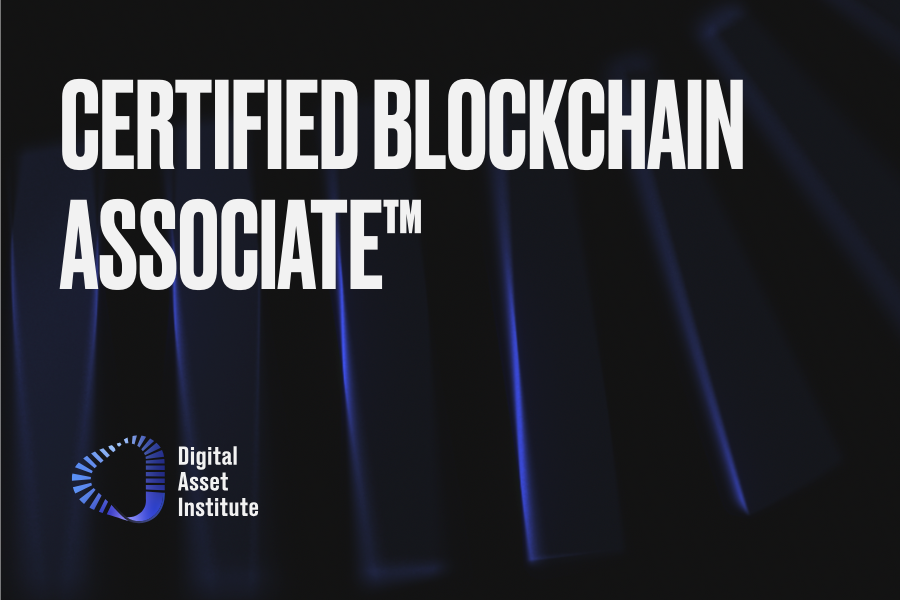Explain blockchain’s core architecture, blocks, hashes, decentralization, immutability, transparency, and why consensus replaces centralized trust in networks.
Compare Proof of Work and Proof of Stake, incentives, security trade-offs, energy impact, and validator/miner roles.
Apply blockchain components, wallets, smart contracts, indexing, and layers, to real use cases across finance, supply chains, identity.

Program overview
This program demystifies blockchain from first principles: how blocks are linked by cryptographic hashes, why decentralization matters, and how consensus substitutes institutional trust. You’ll examine key properties (immutability, transparency, security), then compare PoW and PoS to see how incentives, validation, and energy use differ. From there we unpack the stack, Layer 1/2/3, wallets and smart contracts, plus indexing/oracles, before surveying real applications in credentials, supply chains, and consumer goods. By the end, learners can explain what blockchain is, what it’s for, and where it fits.
Course Curriculum
-
1
What is Blockchain?
-
(Included in full purchase)
Blockchain Explained
-
(Included in full purchase)
Video 1 - Blockchain Explained
-
(Included in full purchase)
Quiz 1
-
(Included in full purchase)
Blockchain Designs
-
(Included in full purchase)
Video 2 - Blockchain Designs
-
(Included in full purchase)
Quiz 2
-
(Included in full purchase)
Core Components
-
(Included in full purchase)
Video 3 - Core Components
-
(Included in full purchase)
Quiz 3
-
(Included in full purchase)
Indexing the Blockchain
-
(Included in full purchase)
Video 4 - Indexing the Blockchain
-
(Included in full purchase)
Quiz 4
-
(Included in full purchase)
Blockchain Applications & Why
-
(Included in full purchase)
Video 5 - Blockchain Applications & Why
-
(Included in full purchase)
Quiz 5
-
(Included in full purchase)
The Different Layers of Blockchain
-
(Included in full purchase)
Video 6 - The Different Layers of Blockchain
-
(Included in full purchase)
Quiz 6
-
(Included in full purchase)
Limitations of Blockchain Systems
-
(Included in full purchase)
Video 7 - Limitations of Blockchain Systems
-
(Included in full purchase)
Quiz 7
-
(Included in full purchase)
Skills Gained & Business Application
You’ll translate blockchain jargon into clear, defensible decisions: explain how consensus removes intermediaries, assess PoW vs PoS trade-offs, and map when public, private, consortium, or hybrid designs make sense. You’ll get hands-on with wallets including custody choices, smart contracts, and indexing tools so teams can verify assets, trace transactions, and build with confidence. We directly address common blockers, scalability limits, UX hurdles, and regulatory uncertainty, equipping you with checklists and evaluation frameworks you can use in vendor diligence, product roadmaps, and client conversations. Expect practical benefits: faster alignment across technical and non-technical stakeholders, better risk control around keys and contracts, and credible narratives for real-world use cases.
Who this program is ideal for
✓ Strategy & innovation leads (consulting/enterprise): Compare public/private/consortium/hybrid designs and pick architectures aligned to business goals and governance needs. ✓ Product managers & solution architects: Map L1/L2/L3 stacks, dApps, and oracle/indexing patterns into practical product roadmaps. ✓ Risk, compliance & control functions: Evaluate wallet/custody models and consensus trade-offs; anticipate regulatory/UX risks and smart-contract failure modes. ✓ Legal & policy teams: Understand permissioned vs permissionless networks and where selective transparency or consortium governance is appropriate. ✓ Data/analytics & engineering teams: Use indexing/oracles to turn raw chain data into dashboards, audits, and real-time app features. ✓ Operations, security & custody teams: Build key-management practices, choose custody approaches, and design controls for irreversible transactions.
Become A Certified Blockchain Associate
Graduates earn the Certified Blockchain Associate credential with the vocabulary, frameworks, and practical tools to contribute immediately on blockchain-related initiatives.
$215.00
